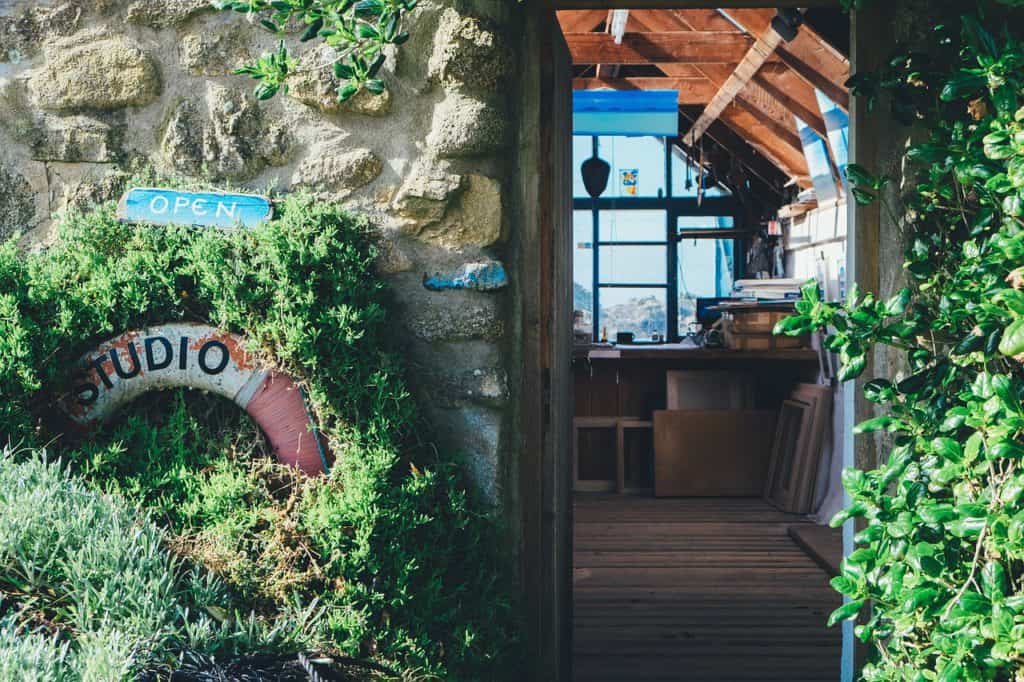
Landscaping your yard can be as challenging as it is rewarding. While you aim to create a space that reflects your style and meets your outdoor living needs, common pitfalls often stand in the way of achieving your dream yard. In these “7 Pro Level Landscaping Hacks: Solving Everyday Yard Dilemmas,” we dive into the world of landscaping, offering professional insights and solutions to these challenges.
Understanding Landscaping Fundamentals
The Balance of Aesthetics and Functionality.
Landscaping isn’t just about making your yard look good; it’s about creating a space that is both beautiful and functional. The conventional focus on aesthetics often overshadows practicality.
Instead, aim for a design that harmoniously blends visual appeal with everyday usability. There are ways to do this and it all starts with planning.
many people have a visual idea but never put it down on paper for various reasons. Even if you can’t draw just a rough sketch outlining various segregated parts will do. Here are some things to consider before picking up a shovel.
- Functionality First: Start by defining the intended use of the space, such as relaxation, entertainment, or gardening. This will guide the layout and design choices.
- Seasonal Considerations: Select plants and design elements that are suitable for the local climate and offer year-round interest and usability.
- Balance and Proportion: To create a visually pleasing and functional area have the landscape elements proportionate to the space and balanced in their arrangement. Obviously this may change as you see your project taking shape, less of something and more of something else. Its a woman’s prerogative as they say. 😉
- Integrate Nature and Structure: Combine natural elements like plants, trees, and water features with structural elements such as pathways, seating, and fences to create a cohesive and usable outdoor environment.
- Accessibility and Flow: Design walkways and sitting areas to be easily accessible, ensuring a smooth flow throughout the garden that encourages exploration and enjoyment.
Budgeting for Your Dream Landscape
A common trap in landscaping is under-budgeting, or no budgeting. Get some idea of prices and set a realistic budget at the outset. Adding 30% to what you estimate is a way of staying in control of the finances once you begin buying materials.
Prioritize features that offer the most value, balancing cost with impact. There is nothing wrong with DIYers doing it in stages as they can afford the materials for various sections.
Specific Challenges and Innovative Solutions
Landscaping the Front Yard: The Forgotten Gem.
Often playing second fiddle to the backyard, the front yard should be an important aspect of your home’s overall landscape design.
It’s the first thing visitors see and plays a significant role in forming first impressions. Here’s how to ensure your front yard isn’t just an afterthought:
- Curb Appeal Matters: The front yard sets the tone for your entire property. Enhancing its appeal can include simple steps like regular lawn maintenance, adding colorful flower beds, or installing a well-designed pathway.
- Balancing Function with Aesthetics: While the front yard is more about aesthetics, it should also serve a functional purpose. Consider elements like lighting for safety, easy access paths, and low-maintenance plants that look great year-round.
- Seasonal Considerations: Use plants that offer visual interest across different seasons. Perennials that bloom at various times of the year can keep your front yard looking vibrant regardless of the season. 🌴🌳🎄
- Making a Statement: Your front yard can be a reflection of your personal style. Whether it’s through a unique garden design, an eye-catching sculpture, or a stylish seating area, make it a space that speaks to your personal taste.
- Sustainability Practices: Incorporating sustainable practices like xeriscaping or native plant gardens can reduce maintenance while making a positive environmental impact.
- Integrating with the Streetscape: Ensure that your front yard harmonizes with the neighborhood’s overall look and feel. This doesn’t mean sacrificing individuality but rather blending personal preferences with community aesthetics.
By giving your front yard the attention it deserves, you can create a welcoming entrance to your home that combines beauty, functionality, and personal expression.
Navigating Maintenance Pitfalls.
One of the biggest surprises for many homeowners post-landscaping is the level of maintenance required to keep their yards looking pristine.
A beautiful design can quickly become a burden if not planned with maintenance in mind. Here’s how to avoid common maintenance pitfalls:
- Underestimating the Workload: Many homeowners are unprepared for the amount of work needed to maintain certain landscapes. Lawns, for instance, require regular mowing, weeding, fertilizing, and watering. Before finalizing your design, realistically assess how much time you can dedicate to yard maintenance.
- Choosing High-Maintenance Plants: While exotic and non-native plants can be visually striking, they often require more care and resources to thrive in a new environment. Opt for native plants that are adapted to your local climate and soil conditions. They typically require less water, fewer pesticides, and minimal care.
- Irrigation Oversights: An inefficient irrigation system can lead to over or under-watering, both of which are detrimental to plant health. Invest in a well-planned irrigation system, preferably with a smart controller that adjusts watering based on weather conditions.
- Neglecting Seasonal Care: Different plants have varying needs throughout the seasons. Spring might require pruning and mulching, while fall could call for raking and winterizing. Understand the seasonal needs of your landscape to keep it thriving all year round.
- Overlooking Pest and Disease Control: Regularly inspect your plants for signs of pests or disease. Early detection and treatment can prevent widespread damage and save considerable effort and expense in the long run.
- Tools and Equipment: Ensure you have the right tools for the job. From lawnmowers and hedge trimmers to gardening gloves and pruning shears, having the appropriate equipment makes maintenance tasks more manageable.
- Learning and Adapting: Landscaping is an ongoing learning process. Be prepared to adapt your maintenance strategies as you learn more about your garden’s specific needs and challenges.
By planning for these maintenance aspects in advance, you can prevent your backyard dream from turning into a maintenance nightmare.
The Art of Functional Design.
A yard should cater to its users. In the early days of a marriage this is going to seem impossible.
The kids want swings, you want a quiet place to relax, a place for the BBQ. The dog digs holes in your garden, and possibly a swimming pool is another obstacle to overcome
With all these competing interests you are looking for a place to start. The best place to start is to get a piece of paper and start doodling.
This is the best way for your questions to be answered. Circles and arcs make a lot of sense when landscaping.

Smart Irrigation: More Than Just Watering.
Smart irrigation goes beyond simply watering your plants; it’s about using water resources efficiently and effectively. Here’s how to optimize your irrigation strategy:
- Choosing the Right System: There are various irrigation systems available, including drip irrigation, soaker hoses, and smart sprinklers. The key is to choose one that suits your landscape’s specific needs and conserves water.
- Utilizing Technology: Smart irrigation controllers can adjust watering schedules based on weather conditions and soil moisture levels, ensuring plants receive the right amount of water without waste.
- Zoning Your Landscape: Different plants have different water needs. By creating irrigation zones, you can ensure that each area receives the appropriate amount of water, reducing over or under-watering.
- Regular Maintenance: Check your irrigation system regularly for leaks or blockages to ensure it operates efficiently.
Tackling Erosion Control.
Getting this wrong can be costly.
Erosion control is critical in protecting your landscape investment, particularly in areas prone to heavy rains or on slopes. Here’s how to effectively manage erosion:
- Understanding the Landscape: Identify areas at risk of erosion, such as slopes or areas with poor drainage. Understanding these risk areas is the first step in effective erosion control.
- Integrating with Irrigation: Poor irrigation practices can exacerbate erosion problems. Ensure that your irrigation design does not contribute to soil erosion by avoiding excessive watering and directing water flow away from vulnerable areas.
- Plant Selection for Erosion Control: Deep-rooted plants, ground covers, and grasses are excellent for stabilizing soil. Their root systems help to hold the soil in place, reducing erosion.
- Using Hardscaping Wisely: Features like retaining walls, terraces, and rock gardens can provide structural support to slopes and reduce soil movement. These need to be constructed in a way that sheds water, either at base level using, geo-fabric, ag drain (4″ /100mmperforated plastic pipe), and small stone for walls higher than 4′ (1200mm), or slope the ground so that water runs off at the sides on smaller walls.
- Incorporating Drainage Solutions: Proper drainage is key in erosion control. Implementing features like French drains or dry creek beds can help manage water flow and reduce the impact of heavy rains on your landscape.
By tackling this head on from the get-go, with effective erosion control measures, you can create a sustainable landscape that thrives without contributing to soil degradation. Related Article Here.

Holistic Approach to Landscaping.
There are a couple of definitions for holistic landscaping.
- Uses the knowledge of medicinal and edible plants and utilizes that expertise by developing sustainable landscapes. The focus of course, is working with nature rather than against it, and incorporates soil ecology, biodynamic agriculture and use of medicinal and edible plants into the design for the creation of a landscape that is beautiful, sustainable and beneficial to the natural environment as well as to humans.
- Adopting a holistic approach to landscaping also means considering your entire outdoor space as a cohesive unit rather than separate parts. This approach not only enhances the aesthetic appeal but also ensures functional harmony. Here’s how to plan and implement a holistic landscape design:
I am only referring to the 2nd definition from a building point of view.
- Initial Assessment and Vision: Start by assessing your entire outdoor space, including the front yard, backyard, and side yards. Understand the strengths and limitations of each area. Envision how these spaces can work together to form a unified landscape.
- Integrating Different Zones: Consider how different areas of your yard will interact. For instance, how does the garden flow into the patio area? Is there a natural connection between the children’s play area and the family relaxation space? Ensure each zone transitions smoothly into the next.
- Consistent Design Elements: Use consistent design elements throughout your landscape. This can include similar plant types, complementary colors, and recurring materials or textures to create a sense of unity.

- Functionality Across the Yard: Ensure that each part of the yard serves its purpose while contributing to the overall landscape. For example, the front yard should welcome guests and enhance curb appeal, while the backyard could be more focused on relaxation and entertainment.
- Sustainability Throughout the Design: Incorporate sustainable practices across all areas. This includes using water-wise plants, efficient irrigation systems, and materials that are environmentally friendly.
- Planning for Growth and Changes: A holistic approach also means planning for future growth and potential changes. Consider how your landscape will evolve over time and plan accordingly. This might include leaving space for additional plants, considering the mature size of trees, or designing areas that can be adapted for different uses in the future.
- Professional Consultation: If the project seems overwhelming, don’t hesitate to consult with a professional landscape designer. They can provide valuable insights into creating a balanced, holistic design that meets your needs and preferences.
Incorporating Environmental Considerations
Embracing environmental considerations in landscaping goes beyond just choosing the right plants. We are going back to the 1sr definition of Holistic Design.
It is better suited to larger blocks, but components of the process can be used in smaller lots with a careful selection of plants.
Essentially: It’s about creating a landscape that is in harmony with the local ecosystem while also being mindful of the impact on the neighborhood.
Here’s how to strike this balance: It is not as difficult as it sounds.
- Benefits of Going Natural: Allowing parts of your yard to grow more naturally can provide habitats for local wildlife and reduce the need for maintenance and resources. However, this approach should be managed carefully to prevent overgrowth from becoming unsightly or problematic.
- Responsible Wild Landscaping: If you prefer a wilder, more natural landscape, consider incorporating native plants that thrive without much intervention. These plants are adapted to the local climate and soil, requiring less water and fewer pesticides.
- Community Considerations: While embracing a natural landscape, it’s important to consider how your yard fits within the neighborhood. Overgrown yards can sometimes lead to disputes with neighbors or even violate local ordinances. Strive for a balance where your yard is both environmentally friendly and aesthetically pleasing.
- Tending to ‘Wild’ Areas: Even in a natural landscape, some maintenance is necessary. This can include controlling invasive species, managing plant health, and ensuring that overgrowth doesn’t encroach on neighboring properties or public spaces.
- Creating a Diverse Ecosystem: Introduce a variety of plants that bloom at different times of the year. This not only adds visual interest but also supports a range of pollinators and wildlife throughout the seasons.
- Educating and Sharing with Neighbors: If your approach is different from the norm, take the opportunity to educate your neighbors about the benefits of environmentally friendly landscaping. Sharing your knowledge can lead to a greater understanding and appreciation within your community.
- Balancing Aesthetics and Ecology: Aim for a landscape that is both ecologically responsible and visually appealing. Thoughtful design, even in a more natural setting, can create a space that is both beneficial to the environment and attractive to the eye.
By carefully considering these environmental aspects, you can create a landscape that not only supports the local ecosystem but also maintains good relations with your neighbors and enhances the overall appeal of your community.
Having a Lasting, Enjoyable Space.
Addressing the usual challenges in landscaping involves a clever mix of imagination, pragmatism, and anticipation. Utilizing these 7 pro level landscaping hacks should empower you to revamp your outdoor area into an aesthetically pleasing, effective environment that caters to your preferences and endures through the years.
For more landscaping insights, go Here.
Thanks for reading.









